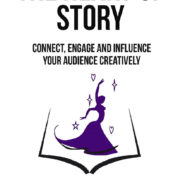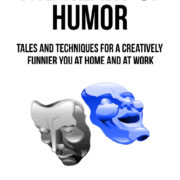Storytelling Legacies of Leaders
In the mid-1930s India, a spritely old man wrapped up in loincloth spoke of freedom, compassion, and peace. Mahatma Gandhi carried a big stick, marched across the nation to pick up a fistful of salt by the ocean, and eventually liberated the country. He spoke to his people through painted visions and he touched hearts through parables of possibilities, “Change,” he said “must come from the inside. We must become that change.”

Connect, Engage and Influence your World Creatively!
A few decades later in America, another visionary stepped on the podium and shortly after, set aside the text of his prepared remarks to improvise. Addressing a crowd of many thousands, he declared his dream—people from all corners of the country, from all walks of life, children of all races living together as one “to turn the jangling discords of our nation into a beautiful symphony of brotherhood.” He announced his vision to the world to change a nation.
In the early 1980s in the Philippines, a journalist-turned-statesman chose to stand up against tyranny. Amid the toughest of odds, he flew home, stepped off the plane, and walked into the waiting jaws of death. This act of courage gave life to a story that inspired millions to act. Fired by his example and call of, “The Filipino is worth dying for!” the first ever people power revolution produced a peaceful transfer of leadership and changed the country’s future. People power became a global model for bringing about change at the country level.
In comparison to the last 20 years, the rate of progress and the proliferation of information and technology have been exponential and show no signs of plateauing. How people will regulate and sustain life stories in the future is unimaginable. The stories of today are flourished in diverse formats. They are told and retold to sound and music, in dance, in art, in words, in moving images, all in bytes and pixels. Stories travel, morph and multiply at the speed of light with a cursory glance and the touch of a fingertip.
Will this explosion of knowledge and ideas through technology ever change the concept and the heart of telling stories? The answer is a flat out no!
Here’s why:
- Wherever they may sit, leaders enhance their credibility and authenticity through storytelling to spark the change they seek. Storytelling does much, merely by advocating and counter-advocating propositional debate, which leads to increased discussions.
- Storytelling is focused on the future. It is not just an extrapolation of the present. It swirls emergent, new phenomena and nourishes it by downplaying the doubts and misconceptions of yesterday.
- Stories are about human empowerment and real transformations in organizations. Stories are about humanity. Stories are about us transforming into a better us. Stories are about us wanting to know who we are and about us wanting to reach for the stars.
A story is like mist that develops on the outside, but the wisdom emerges from the inside. When a story touches our hearts, it takes hold of us forever and silently sets us free. This is a never ending journey. It is also a never ending symphony. As long as this quest exists, stories will always fuel and fire us. And, since this is a never ending quest, we will always be leading ourselves and others happily into the ever after through stories.
That is the HeART of stories.
Drawn from the book, the HeART of STORY on Amazon.









Leave a Reply
Want to join the discussion?Feel free to contribute!